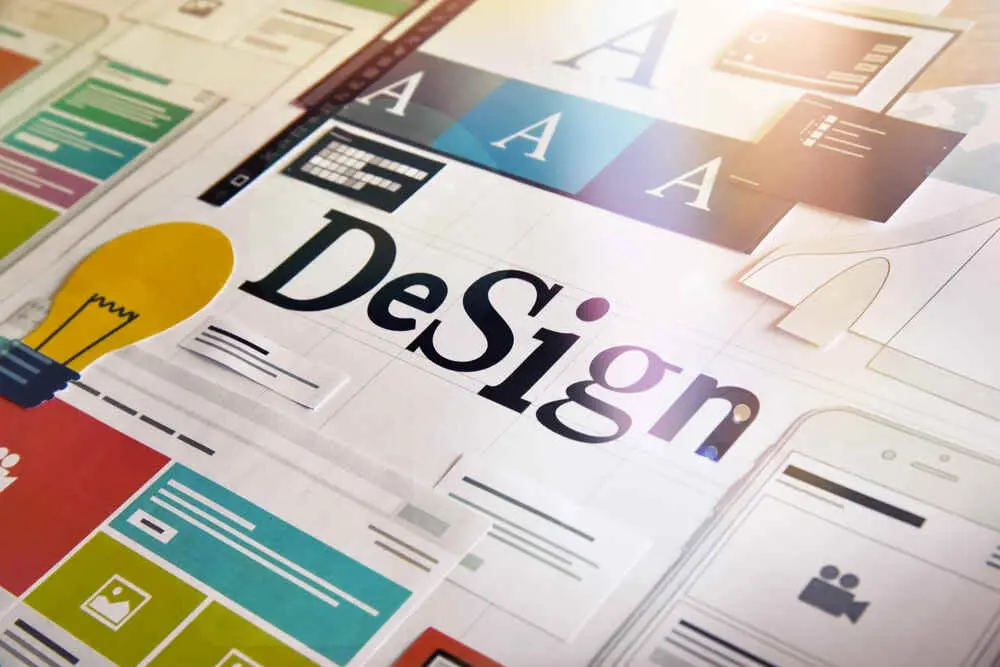Flat Design and Material Design are two of the most popular website design directives. Both have similarities and differences, advantages and disadvantages. Choosing one isn’t always an easy choice. In this post, we’ll examine Flat Design vs Material Design to help you decide which is best for your needs. First, let’s look at each design method to see what they’re all about.
What is Flat Design?
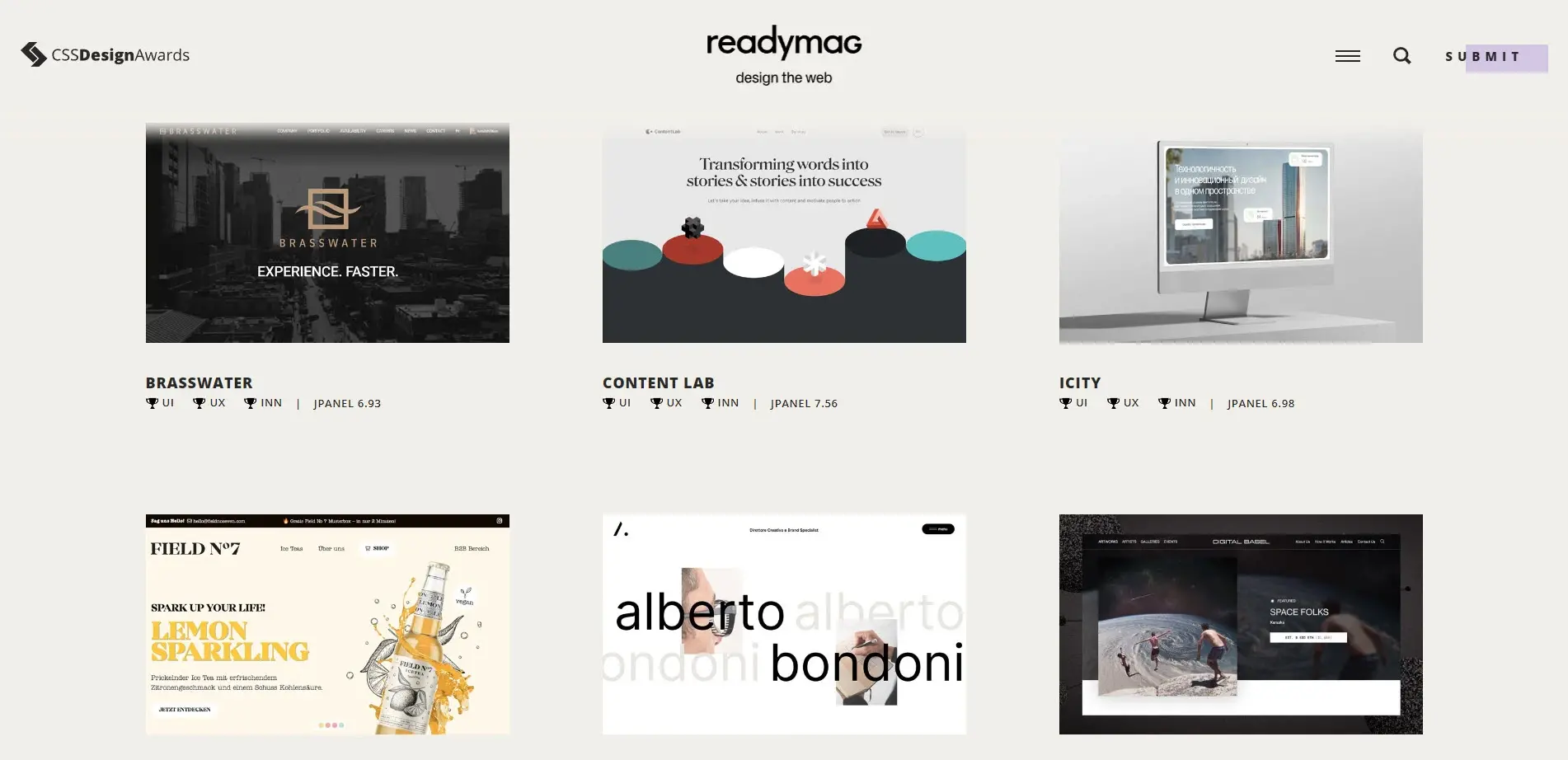
Flat Design comes from the worlds of print and art. It stems from Swiss design and minimalism. Elements of Flat Design can be seen in printed materials from around 100 years ago. The style has developed since then to become the design style we now see on the web. The image above is from CSS Design Awards and shows Flat Design websites.
Flat Design is a minimalistic design approach that’s used for graphic user interfaces (GUI). The concept uses a minimalist approach to elements, colors, and typography. It does away with shading and loads faster than a Rich Design approach. It scales easily and works well with both mobile devices and websites.
Flat Design removes gradients, textures, shadows, shading, and any other styling that could give an element a three-dimensional look. The designs are more streamlined, making them more efficient and load fast. However, the flat colors can make it difficult to know which elements are clickable and which are not. This can make the user interface slower and more difficult to use because of confusion about what can be clicked and what can’t.
Flat Design is the opposite of Rich Design, which adds lots of gradients, reflections, colors, bevels, shadows, and more. While Rich Design adds more visuals, Flat Design simplifies the visuals. Rich Design is slow and can clutter the screen. Rich Design is especially cluttered on small screens. Flat Design is also different from skeuomorphism where objects retain their ornamental design. It works well for screens of all sizes.
Flat Design is sometimes used interchangeably with Minimalist Design, which comes from architecture and art. However, the two are not completely interchangeable. Minimalism covers lots of mediums and removes everything possible while leaving only the required elements. Flat Design is based on the visual artistic side of minimalism. For more information about Minimal Design, see the article Minimalist Website Design.
Flat Design Example with Extras
The image below is from a premium WordPress theme called Cobian. It uses most Flat Design principles but adds a bevel to the button to show that it’s clickable, a shadow to the title text, and a small gradient to the graphic in the background. The clouds and buildings remain flat. This is a good example of using Flat Design where possible and adding a little more visual flare where needed.
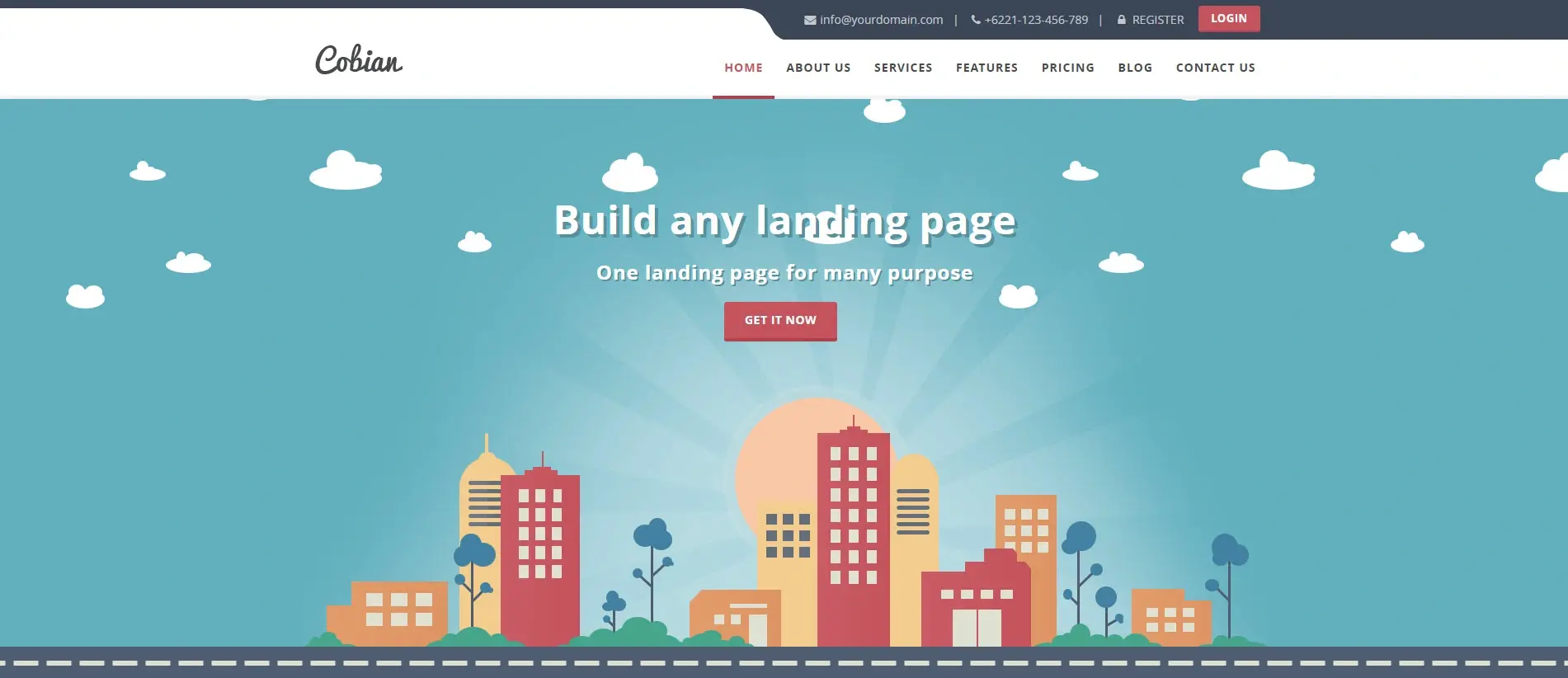
Flat Design Pros and Cons
Pros
Cons
What is Material Design?
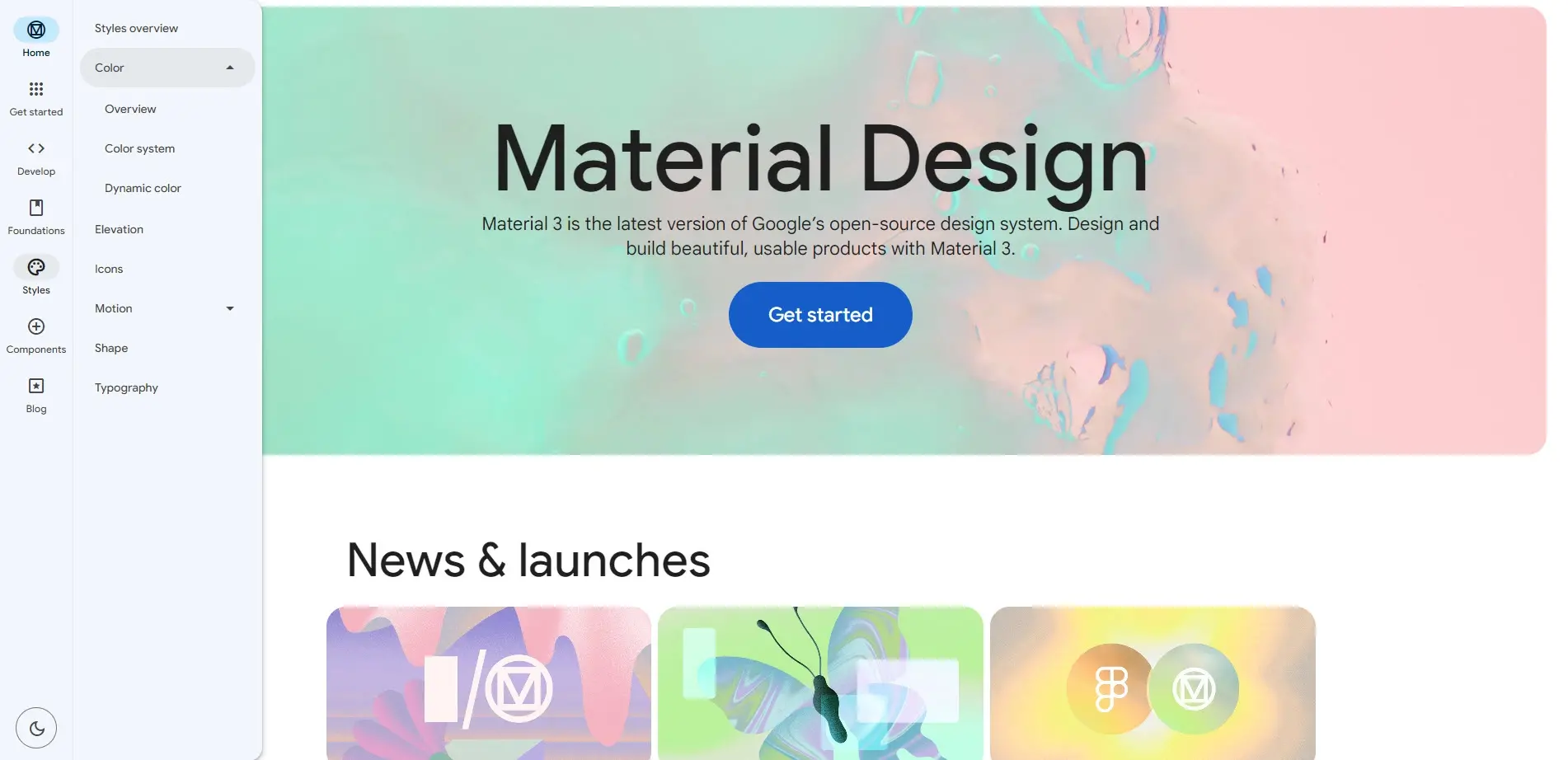
Material Design is a visual design language from Google. It’s based on the Google Now card design and has grown over time. It was created to develop the best design practices for the web with a focus on smartphones. It allows web designers to create custom themes with shapes, colors, and typography.
The concepts have developed over time and have added new features with every update. The current version is known as Material 3. The image above is from the Material Design website.
Material Design takes Flat Design to the next level. It starts with Flat Design and adds simplified skeuomorphism to build layers on the Z-axis to show visuals on various planes. This makes everything visually pop and improves navigation. At the same time, it remains simple and uncluttered. User interfaces (UI) designed with Material Design guidelines are easy to use. Elements that are clickable look different from those that are not. Users can tell at a glance that something is interactive.
Features include responsive grid layouts, padding, animations, shadows, rounded corners, colorful icons, negative space, bottom navigation bars, large buttons, animations, and custom UI themes created from the user’s wallpaper for Android smartphones. It favors the Google Sans font. The strong focus on Android devices keeps the designs consistent from one device to another.
Google’s Material Design website provides all the information needed to develop with Material Design. It provides information on getting started and has several sections with news, design system updates, and resources. It also includes information for developers, foundational information, information about styles, and components, and a blog. Web designers will find all of the information they need in one place to design websites and apps with Material Design. It also includes a Figma Design Kit with customizable styles and components.
For more information about Material Design, see the article Material Web Design.
Figma Design Kit
The image below shows the free Figma Design Kit available on the Material Design website. Simply click the button to open the file in Figma and start designing.
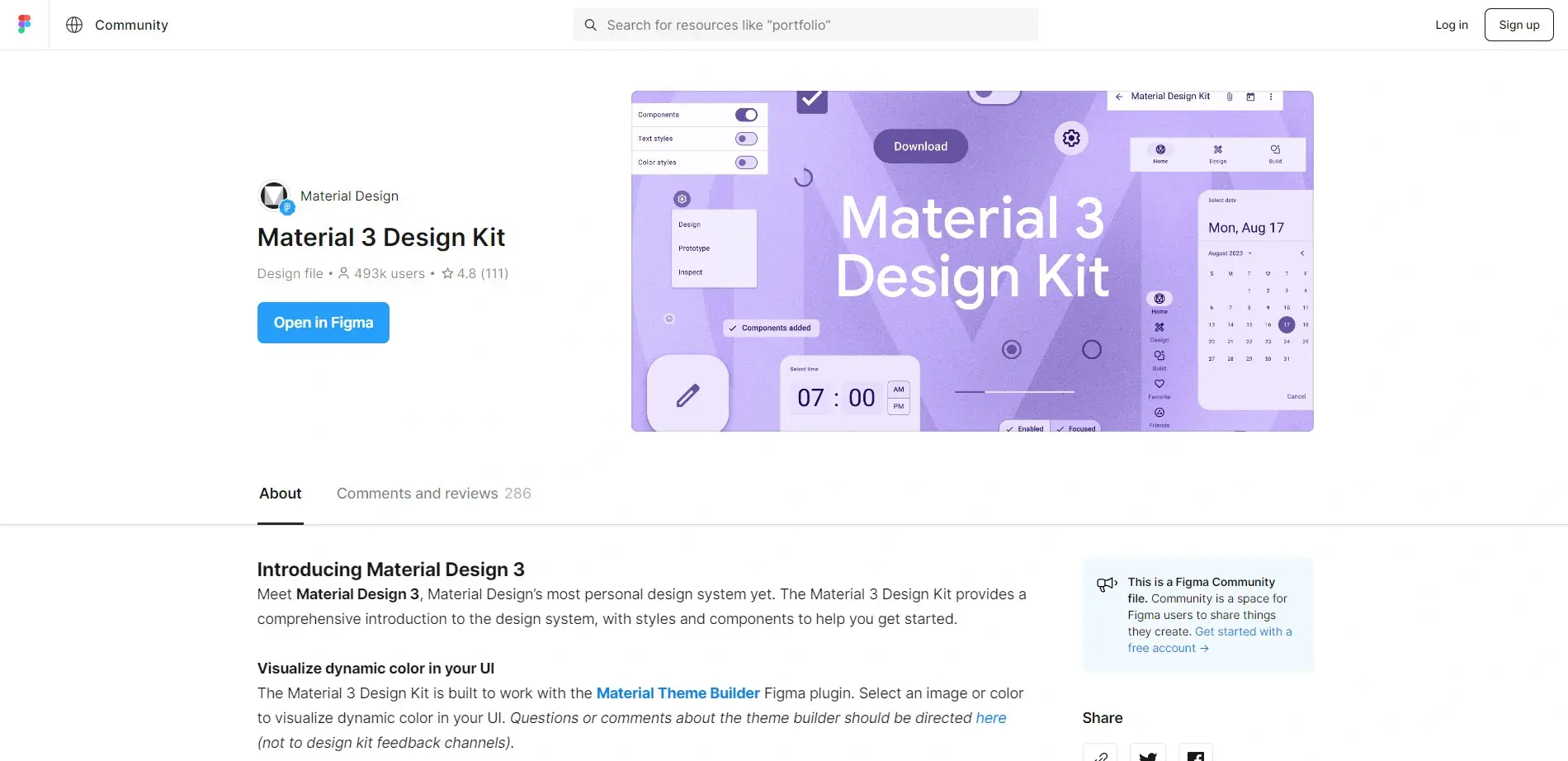
Material Design Pros and Cons
Pros
Cons
How to Choose Between Flat Design vs Material Design
Both Flat Design and Material Design have things in common and several key differences. Both design tools are different from skeuomorphism, which attempts to make all the elements match their real-world counterparts to look as familiar as possible. They’re also different from Rich Design, which adds lots of bells and whistles to the visuals.
Why Choose Flat Design?
Flat Design loads faster and still looks good on the screen. If it’s designed well, the graphical elements look amazing. It’s responsive, so your website should look good on any device. The main downside to flat design is it’s often difficult to know if something is clickable. If you choose Flat Design, it’s best to use it as a guideline and not stick to it too strictly for anything interactive. This can require designers to be more creative.
Use Flat Design for images, graphics, illustrations, icons, typography, and backgrounds, but add a touch more styling for anything clickable so it stands out. If the design is too flat, it can make it difficult to know what is clickable and what is not. So, giving a button a shadow or a border can make it stand out from everything else.
Why Choose Material Design?
Material Design is the more popular choice. It has the backing of Google, so it’s found all over the web and on Android devices. Overall, Material Design has better visuals and is easier for visitors to use. It’s clearer that something is a button, which improves user experience. Google developed Material Design to look the same on all Android devices. So, the experience will be the same from one user to another. Material Design builds on the advantages of Flat Design while avoiding its limitations.
It’s also easier for developers to use because Google provides extensive guidelines. Since it was developed by Google and they want it to be popular, Google provides lots of tools and training. The guidelines specify what web designers should and should not do with their web designs. This does provide a good set of guidelines, but it can also be limiting to creativity.
The Material Design website provides lots of information, so users have access to all the knowledge they need to build successful websites. Google also provides a free design kit for Figma with customizable styles and components. This makes it easy to get started with Material Design. These guidelines are easy to navigate and use, and they’re always available. This makes it easy for anyone to get started with Material Design.
Which Design Method Should You Choose?
Choose the design method that best fits the goals of your website and branding. If you want your website to look uniform on Android apps, the Material Design is the best choice for you.
Choose the design method that best fits your level of skills and creativity. Material Design has guidelines that are easy to follow, but it’s more limiting. Flat Design doesn’t offer as many features and doesn’t have clear guidelines. This can open up creativity, but it also requires more creativity.
Choose the design method that gives you the best user interface (UI) for your needs. With Flat Design, you might need to add Material Design-style features to anything clickable. If this is the case, it’s best to use Material Design. If your UI is simple and no elements are getting in the way of something clickable, then Flat Design would work well.
Here’s my recommendation: if the UI is the simplest possible design, and there are no elements to get confused with something clickable, then use Flat Design. If you want something a little fancier, then use Material Design. Most of the time, this choice would lean toward Material Design.
Regardless of the design method you choose, make sure that you provide an amazing user experience. For more about improving UX, see the article Empathy in UX Design: How to Create a Website that Meets the Needs of Your Users. For more information about user interfaces, see the article 6 Ways to Test the UI Of a Website. If you want to learn more about layouts in web design, see the article Visual Hierarchy in Web Design: A Guide to Creating Effective Layouts.
Ending Thoughts
That’s our look at Flat Design vs Material Design. Both are good choices and have their advantages. Web designers can create amazing websites with either option. Flat Design is simple and looks great on the page, but navigation can be confusing. Material Design builds on Flat Design, solving the issues of Flat Design’s limitations and providing lots of resources. Flat Design is simpler to use, but Material Design is more robust. Fortunately, either one can help designers create amazing websites.
We want to hear from you. Which do you prefer Flat Design vs Material Design? Let us know in the comments.
Frequently Asked Questions
How do I choose a design for my website?
One of the most important things when creating a website for your art is the design. Even though your pieces of art might be amazing, people will leave if your site is hard to navigate. This is why it’s important that the site is easy on the eyes and easy to navigate.
Can I afford a website builder?
Yes. Besides paid website builders, there are also free ones; however, they come with fewer options.
Why should I create a website?
There are many reasons why you should create a website if you’re an artist. You can use it to create a place where people can learn about you, talk about your art, or show off your work.
How is the website maintenance carried out?
On a daily basis, software, hardware, vulnerability, MariaDB, CloudLinux paths and cPanel updates are carried out on our servers without a reboot. However, if we have to carry out any maintenance that includes some downtime, we schedule in advance and update our status page

Randy A. Brown is a freelance writer from east TN specializing in WordPress and eCommerce. He's a longtime WordPress enthusiast and loves learning new things and sharing information with others. If he's not writing or reading, he's probably playing guitar.
View all posts by Randy A. Brown















